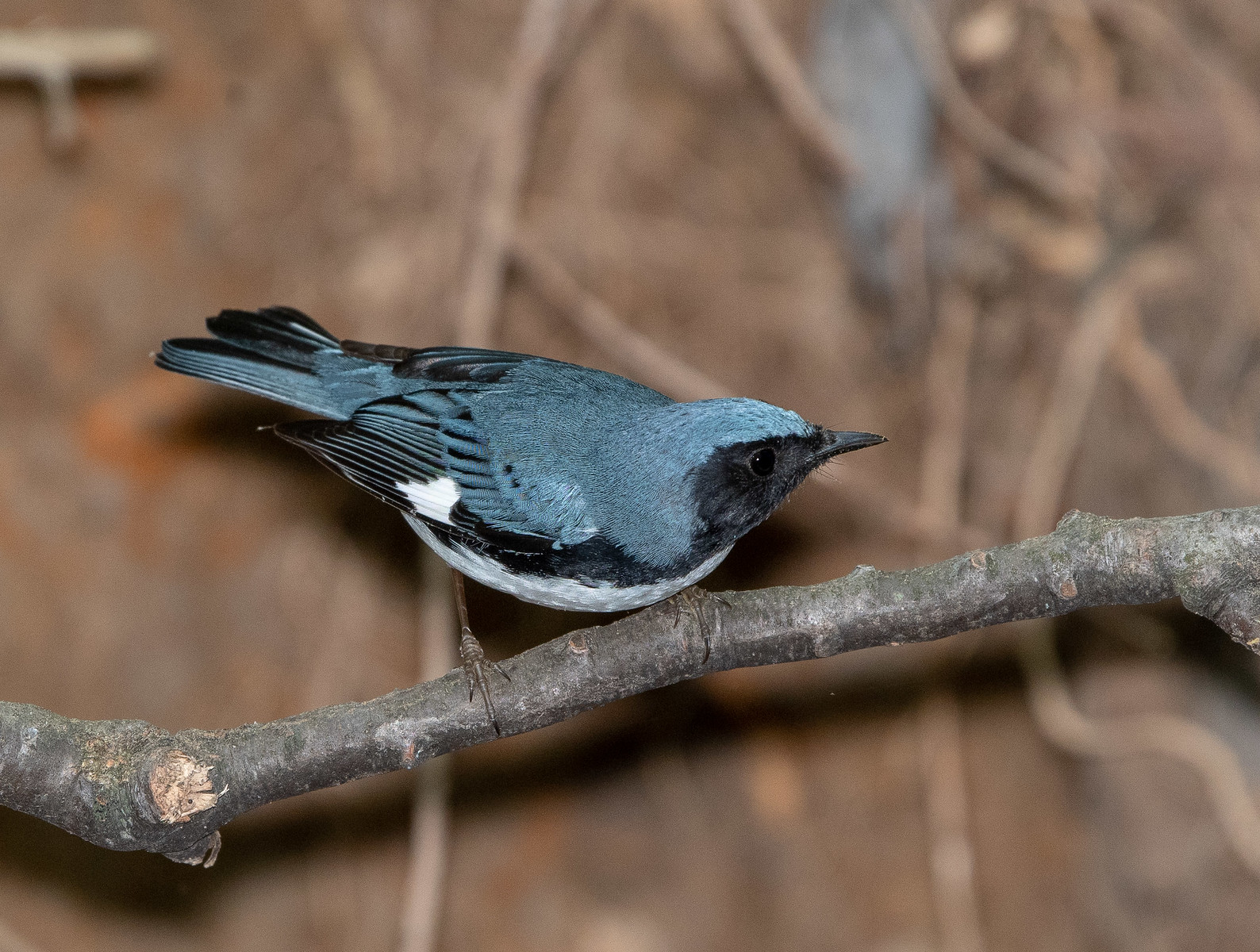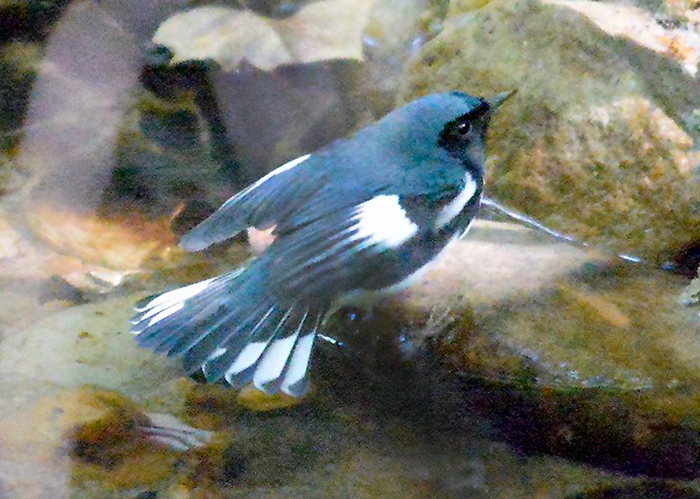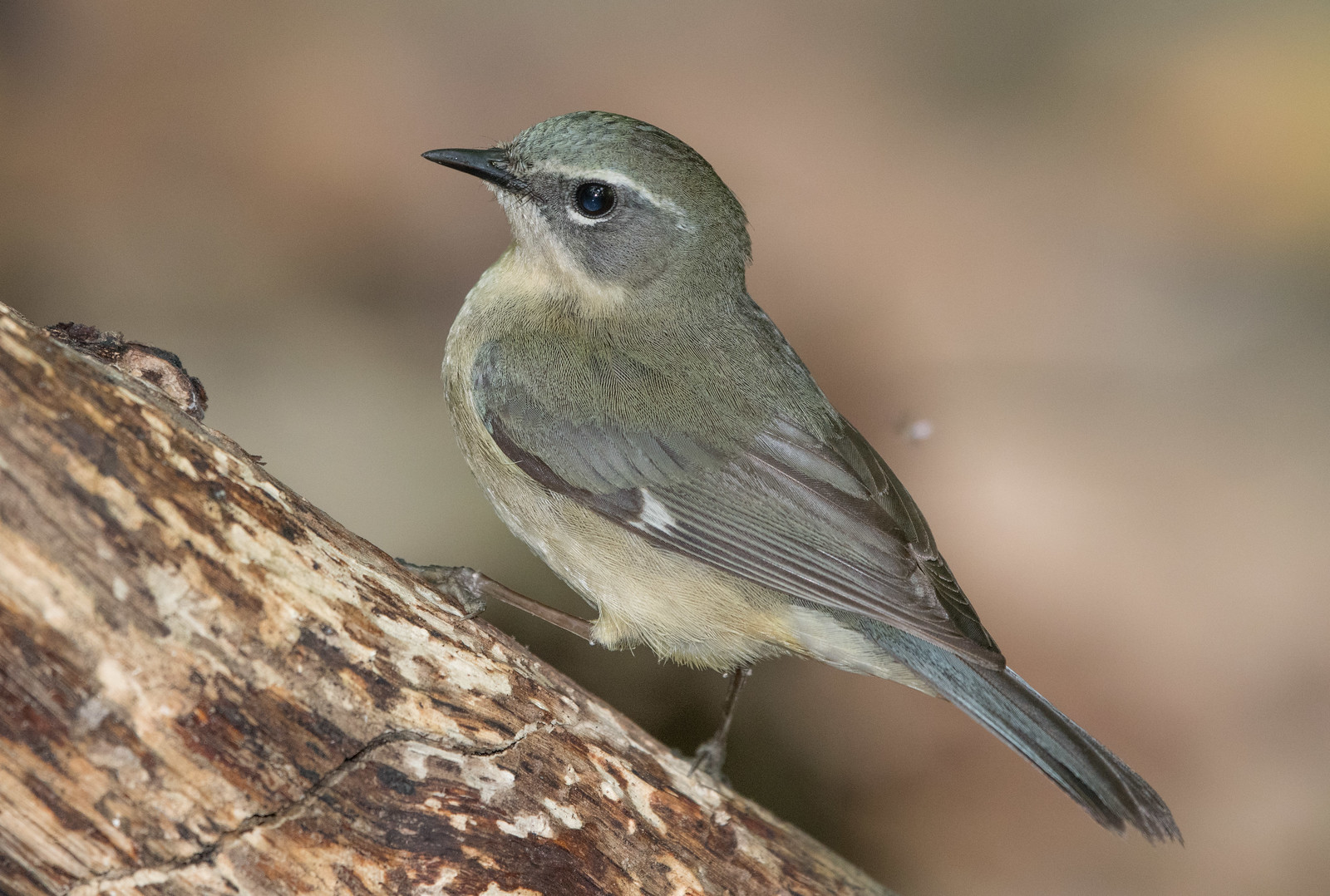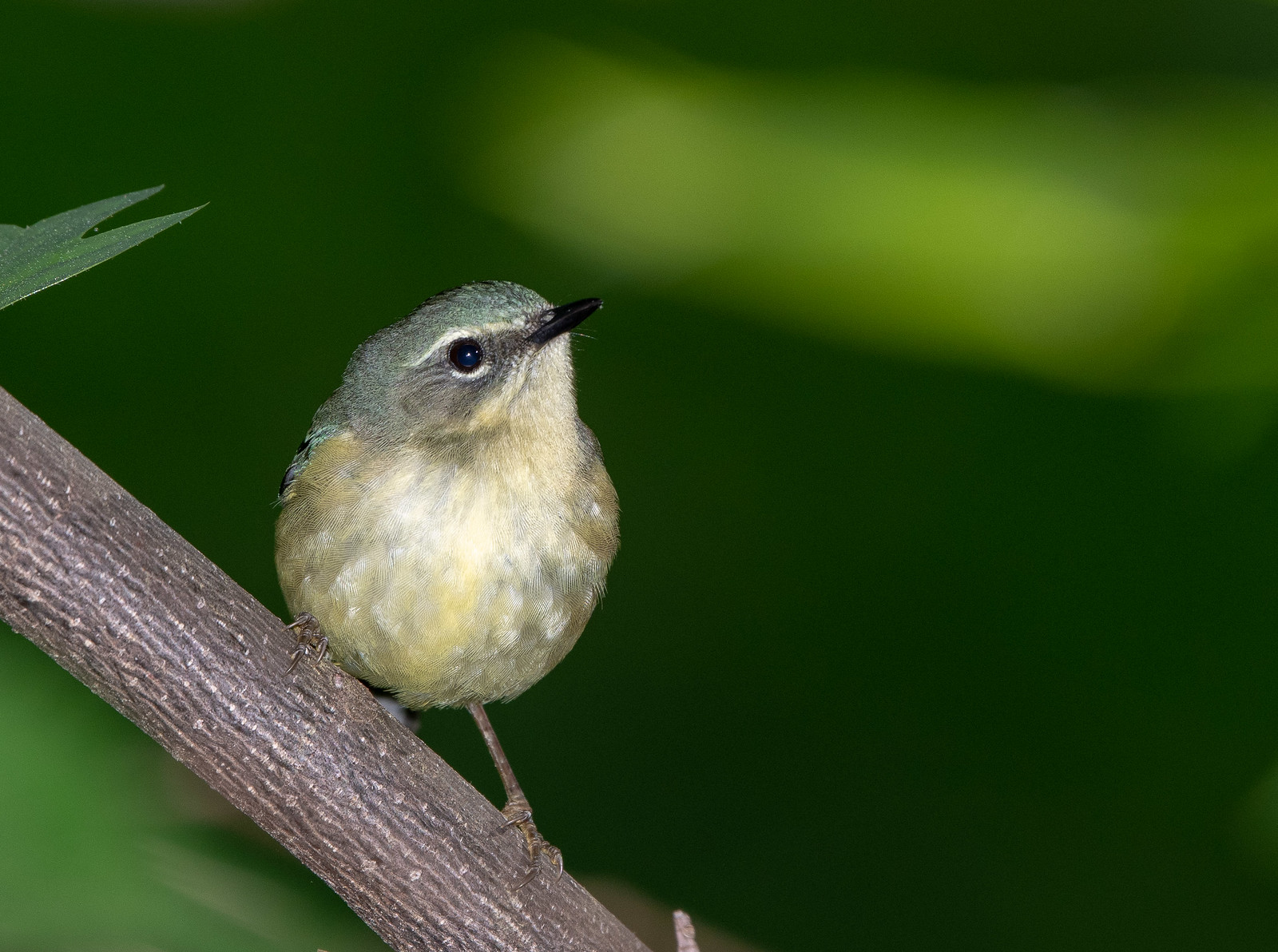| Early Spring Date: | April 15 |
| Late Spring Date: | May 31 |
| Best Dates to See in Spring: | April 27 - May 24 |
Spring: Black-throated Blue Warblers are one of the most common warbler species at Monticello Park. Many are seen during the first few weeks in May. They nest in Canada, the northern states, and the Appalachian Mountains, preferring deciduous or mixed forests.
Fall: Black-throated Blue Warblers are one of the more common fall migrants at Monticello. Some are already heading south in late August. The numbers pick up during the last week in September and continue through the first three weeks in October.
Where to See Them in the Park
Black-throated Blue Warblers forage low in bushes and often go into the stream to bathe and drink. You often can observe them at close range.
Physical Description

Adult male Black-throated Blue Warblers are natty-looking, with a blue back, black face and flanks, a white breast, and a white handkerchief on the wing. The male Black-throated Blue and the Northern Parula are the only two blue warblers you are likely to see at Monticello.

The white handkerchief becomes a wing stripe when the wing is spread. The males also have white on their four outer tail feathers.


The difference between the plumage of the male and the female is greater than for any warbler species who visits Monticello. Female Black-throated Blue Warblers confuse a lot of birders. The long narrow supercilium (eyebrow) and the yellowish underparts cause some people to mistake them for vireos. (Vireos have thicker and heavier bills.) The female's cheek is dark, and there is a white arc under the eye. The best fieldmark is the white handkerchief on the wing (like the male has), but it is not always visible.
Fall: The plumage of neither the adult male nor the adult female changes much between the spring and fall. First-fall males look like slightly browner versions of adult males, and first-fall females resemble adult females, but are slightly paler and do not have a prominent white wing patch.
Vocalizations

The song of the Black-throated Blue Warbler is slow and burry, sounding like I'm so lay-ZEE, or Beer-Beer-Beer-BEE.
Hear the songs of the Black-throated Blue Warbler.
Notes
In 2003, Scott Sillett of the Smithsonian Migratory Bird Center wrote a paper about the effect of El Nino on the migratory success of Black-throated Blue Warblers. Black-throated Blue Warblers winter in Caribbean islands. The paper gives an overview of what happens to them before they arrive at Monticello in the spring and after they leave in the fall. Weather conditions can affect the availability of food on wintering grounds. The weather does not have much effect on whether birds survive during the winter, but it can affect their ability to put on weight before migrating. Birds who fail to add enough weight during the winter will need to stop more frequently while migrating. That can be good for birders, but bad for the birds.
Origin of Names
Common Names: Black-throated Blue from the plumage. The New World Warblers were named for their similar appearance to European warblers, to whom they are not related. Most of the New World warblers do not warble (sing continuously with notes that change frequently).
Genus Name: Setophaga means moth eating.
Species Name: Caerulescens means becoming blue.
Black-throated Blue Warbler video footage
Return to the Index
